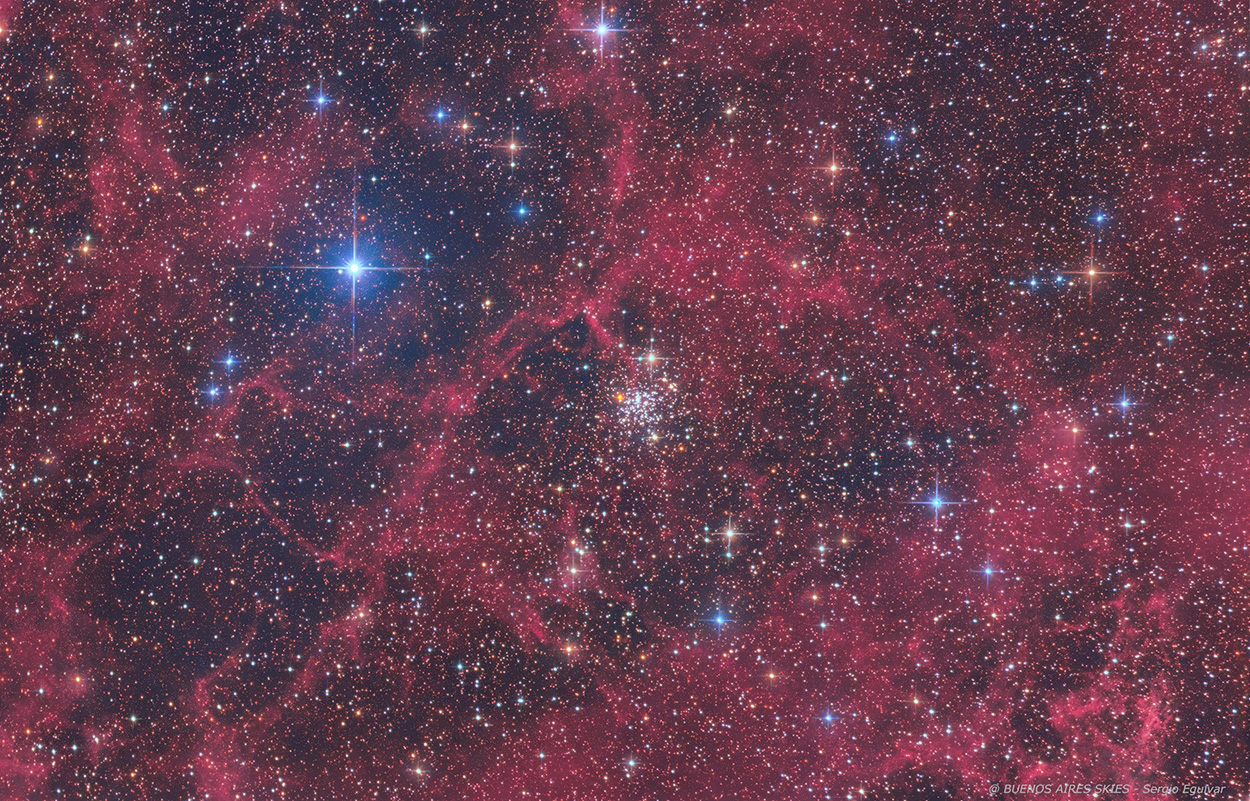
0222222222222222222222222222222222222222222222222222222.
| HOME |
NGC 2660
OPEN CLUSTER WITH NEBULOSITY IN VELA (THE SAILS)
(Image centered at: ra 08 h: 42 m / dec -47º 15')
CLICK THE IMAGE FOR A HIGH RESOLUTION VIEW
January - 2025, Home Backyard in Martinez, Buenos Aires, Argentina
DATA
TYPE: Open Cluster
APPARENT DIAMETER: 3 arc minutes in diameter
APPARENT MAGNITUDE (V): 8.8
DISTANCE: approximately 9.200 light years
IMAGE INFORMATION
INSTRUMENT: 6" ORION OPTICS UK (Ultra Grade Optics) w/Sky Watcher Coma Corrector (0.9x) working at at f4.5
CAMERA: QHY 183 MONO
MOUNT: VIXEN GDPX, OAG with Starlight Xpress Lodestar
FILTERS: BAADER LRGB Set + ANTLIA HA 4nm
SKY CONDITIONS: urban skies - Bortle 8
EXPOSURES: HaRGB (120,60,60,60)
OBJECT DESCRIPTION AND IMAGE SESSION
NGC 2660, is an old, very compact and small open cluster placed at about 3 kpc from the Sun in a region of moderate absorption. This cluster has been subject of several photometric and spectroscopic studies. Controversies arise in terms of its distance, age and metal content. According to Robert Trumpler classification this is a highly concentrated open cluster with 50 to 100 members (recent studies from CONICET accounts much more). The reddish star at the left of the cluster is a carbon star. It was determinate that NGC 2660 has arround 1 billion years old which is to be considered a "middle age" open cluster. The stars appears predominately yellow because of the interstellar dust. Long exposure with the Ha filter revels the filaments which are part of the Type II Vela Supernova Remnant exploited 12000 years ago.
NGC 2660 was discovered by John Herschel on December 29, 1834 from Cape Town, South Africa using a private 6.3 meters telescope. NGC 2660 is visible with the help of a 60-70mm aperture or a small telescope.